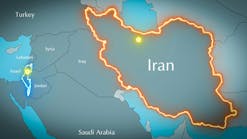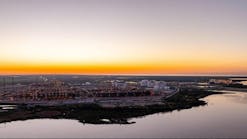Northwest Europe's oil production will peak at 314 million metric tons/year in 1998, and gas production will grow more than 20% before 2000.
That forecast by Mackay Consultants, Inverness, Scotland, contrasts with recent International Energy Agency predictions that the region's oil production will reach almost 350 million metric tons/year in 1999 and stay higher longer than earlier estimates held (OGJ, Jan. 15, p. 31).
Mackay expects new production, particularly off Norway, to hike North Sea oil flow by more than 10% this year, with a further push in 1997 followed by a small rise in 1998.
"On present evidence, 1998 will be the peak year for North Sea oil production because we are forecasting a fall of about 2.6% in 1999," Mackay said. "That will be welcome news for OPEC."
The analyst reckons Norway's oil production will continue to rise during the forecast period, but toward the end this will be offset by a decline in U.K. production.
Offshore role
Mackay acknowledged the importance of offshore oil production, pointing out that it accounted for 29.6% of world production last year, its highest share. Offshore gas production accounted for 20.6% of 1995 world gas flow.
The analyst's data show world oil production has increased by nearly 11% since 1987 while the offshore contribution has increased by more than 36% during the same period. Most of this growth in offshore oil and gas production occurred in the North Sea, particularly in the U.K. and Norwegian sectors.
World offshore oil production increased by about 82.4 million metric tons during 1993-95. Of that increase, 75.7% came from the North Sea.
"In other words," Mackay said, "the recent rate of growth in North Sea oil output has been nearly nine times that of the rest of the offshore industry."
Drilling
Mackay predicted exploration and appraisal (E&A) drilling will increase in virtually every sector of the North Sea during the next few years, particularly off Netherlands. But as production declines, E&A drilling will fall, too.
The U.K. will continue to dominate exploration drilling, accounting for about three fourths of the wells drilled off Northwest Europe. The U.K., Norway, and Netherlands will together account for more than 90% of the total.
"However," Mackay said, "we are forecasting increases in exploration drilling elsewhere, including the Faroes, and they may eventually lead to significant changes in the geographical pattern of activity."
Spending
Expenditures off Northwest Europe will hold steady this year and next, then decline steadily. The main reason is the decline in the U.K. sector, where total outlay is expected to fall by 20% from 1994 to 1999. Throughout the forecast period, the U.K. and Norway will account for about 90% of total spending.
Some of the decline in spending by the U.K. offshore industry will stem from operators' Cost Reduction Initiative for the New Era, which has attempted to cut development costs by 30%.
Mackay said, "A notable trend has been the move away from using traditional piled steel platforms in favor of subsea production systems and floating production systems.
"This has had a very adverse effect on the platform fabrication yards in the U.K., which are currently working at about 25% of capacity and have made thousands of their workforce redundant over the last few years."
Field development
Of 22 fields listed as under development off Northwest Europe, Mackay said, only 10 will use conventional steel platforms. Some of those will be not normally manned.
Four U.K. fields are being developed with floaters and six with subsea systems, while one is being developed by a floater/wellhead platform and another using extended reach wells from an existing platform.
"We expect the trend toward floating production systems to continue," Mackay said. "Similarly, developments in extended reach drilling and horizontal drilling will mean that more of the smaller discoveries can be developed without separate production systems. Thus, we expect expenditures on production platforms to continue to decline."
The analyst said six fields are under development off Norway, two of which will use floaters, two conventional platforms, one production jack up/tanker combination, and one subsea development.
Of 17 Norwegian field development projects under consideration, Mackay expects four to be floaters. Most are expected to use subsea systems tied back to existing facilities.
Copyright 1996 Oil & Gas Journal. All Rights Reserved.

